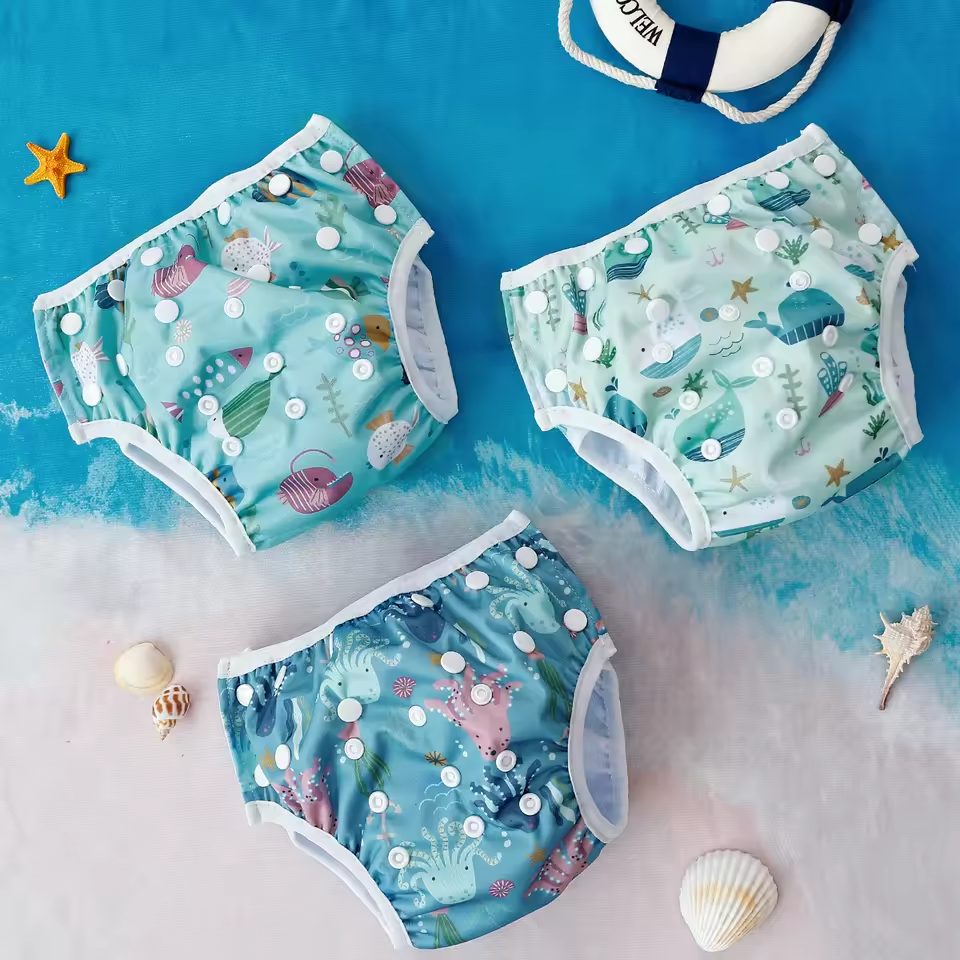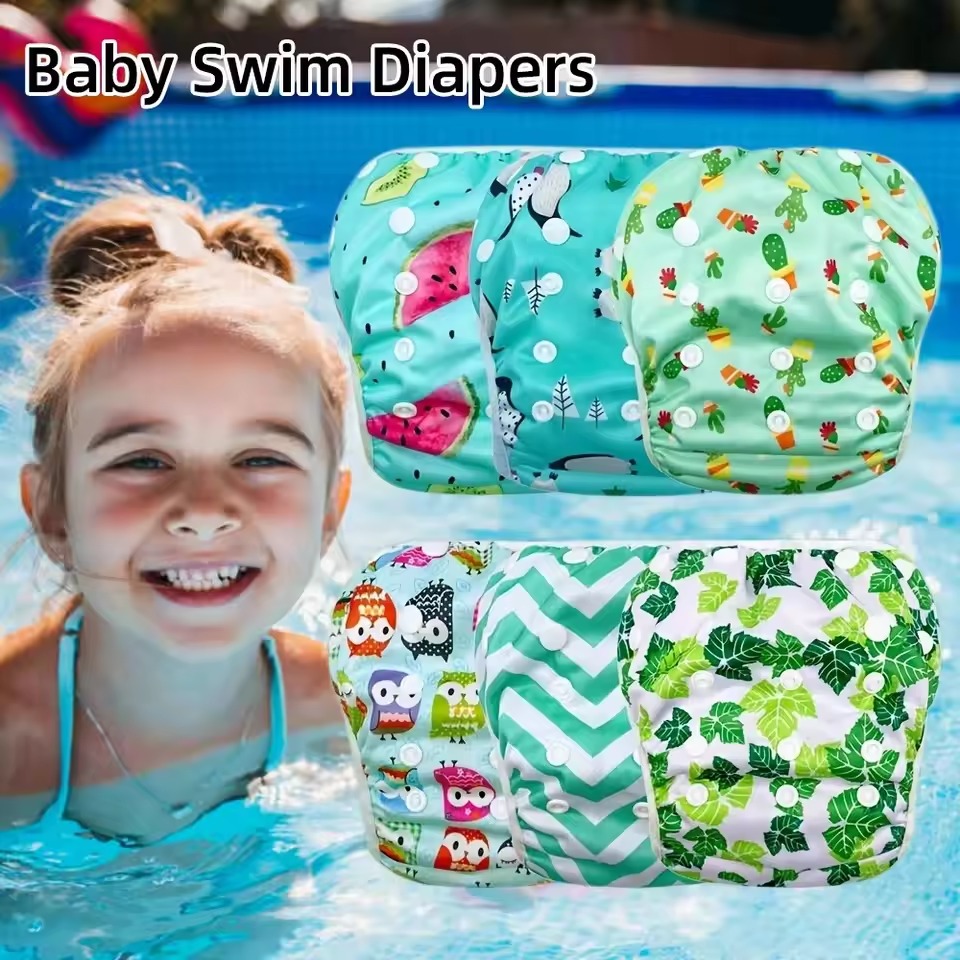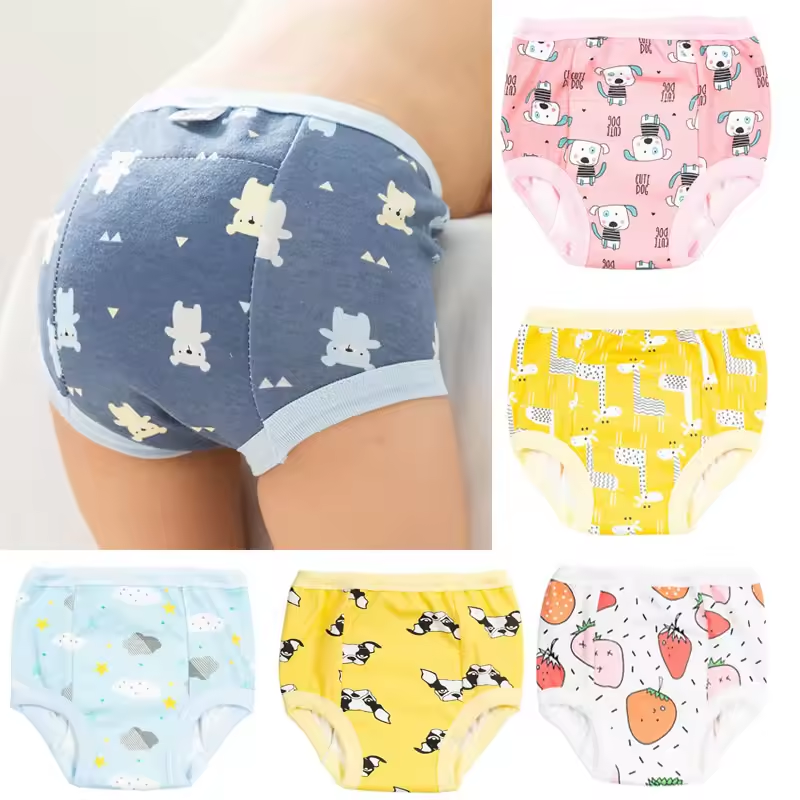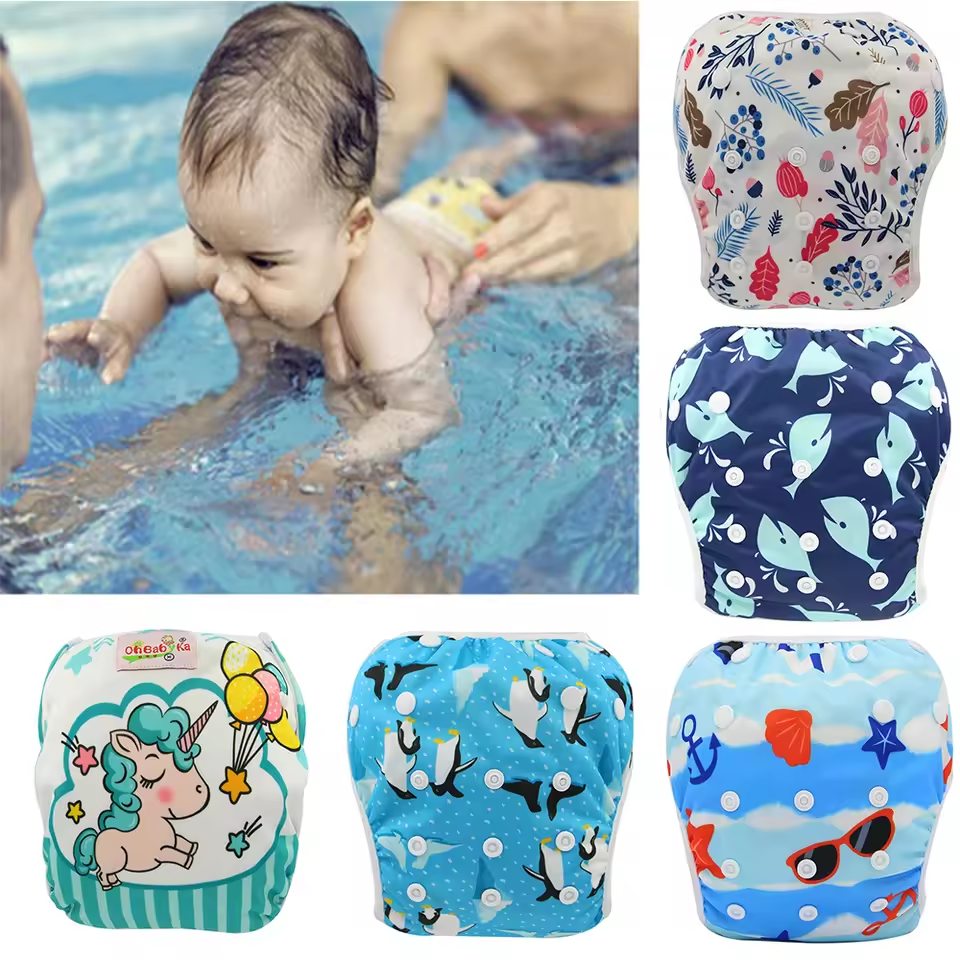Understanding the Importance of Baby Swim Diapers
Baby swim diapers are essential for parents who want to introduce their infants to water activities while maintaining hygiene and safety. Unlike regular diapers, these specialized products are designed to be worn in pools, lakes, or beaches, preventing leaks and keeping the water clean. Swimming with a baby can be a fun bonding experience, but without the right swim diapers, it can quickly become messy or even hazardous.
Why Do Babies Need Swim Diapers?
- Hygiene: Swim diapers contain waste and prevent contamination of shared water spaces.
- Comfort: Lightweight and breathable materials ensure your baby stays comfortable during play.
- Safety: Many public pools and beaches require swim diapers by law to maintain cleanliness.
Key Considerations When Choosing Baby Swim Diapers
- Material: Look for waterproof layers to prevent leaks.
- Fit: Ensure the diaper is snug to avoid shifting during movement.
- Durability: Opt for products that can withstand repeated use or disposal without tearing.
Safety and Health Benefits of Baby Swim Diapers
Safety is the top priority when selecting baby diapers. The right product should minimize the risk of accidents while promoting your child’s well-being. For instance, swim diapers with reinforced seams reduce the chance of leaks, protecting both your baby and other swimmers.
Health Considerations
- Skin Sensitivity: Avoid diapers with harsh chemicals that could irritate sensitive skin.
- Allergy-Friendly Materials: Look for hypoallergenic fabrics like bamboo or organic cotton.
- UV Protection: Some swim diapers now include UV-resistant materials to shield delicate skin from sun exposure.
Expert Recommendations
Pediatricians often advise using swim diapers even during short water sessions to prevent infections. Always check for certifications like OEKO-TEX or FDA approval to ensure safety standards are met.
Material Innovations in Baby Swim Diapers
Modern baby swim diapers leverage advanced materials to enhance performance. For example, hydrophobic layers repel water outward while absorbing moisture internally. Key materials include:
- Polyester Mesh: Lightweight and breathable for airflow.
- Polyurethane Laminate (PUL): Waterproof yet flexible for movement.
- Bamboo Fiber: Eco-friendly and soft for sensitive skin.
Material Comparison Chart
| Material | Pros | Cons |
|---|---|---|
| Bamboo | Biodegradable, hypoallergenic | Less durable than synthetics |
| PUL | Waterproof, durable | Less breathable |
| Microfiber | High absorbency | Can irritate skin over time |
Types of Baby Swim Diapers: Disposable vs. Reusable
The choice between disposable and reusable swim diapers depends on your lifestyle and priorities.
Disposable Swim Diapers
- Pros:
- Convenience: Single-use design for quick disposal after use. Ideal for busy parents or occasional swimmers.
- Cost-Effectiveness for Short-Term Use: Best for families who swim less than once a week.
- Variety of Sizes: Brands like Huggies Little Swimmers offer sizes for newborns (NB-6 months) up to toddlers (24–36 months).
- Immediate Leak Protection: Pre-sealed seams reduce setup time.
- Cons:
- Environmental Impact: A single family using disposable diapers for a summer can generate ~500 plastic diapers, contributing to landfill waste.
- Cost Over Time: Families swimming weekly can spend 50–100 monthly on disposables.
- Limited Absorbency: Some low-cost brands may leak during prolonged use.
Reusable Swim Diapers
- Pros:
- Long-Term Savings: A 25–40 reusable diaper lasts 6–12 months, reducing costs by ~70% over disposables.
- Eco-Friendly: Eliminates plastic waste and supports circular economies.
- Customizable: Pair with absorbent liners (e.g., Thirsties Microfiber Inserts) for customizable absorbency levels.
- Cons:
- Initial Setup Cost: Requires purchasing liners and washing supplies.
- Maintenance Time: Takes 20–30 minutes to clean and dry after each use.
- Performance Limitations: May require frequent changes in water with chlorine (e.g., pools), which can degrade fabric over time.

How to Choose the Right Size and Fit
A poorly fitted swim diaper can lead to leaks or discomfort. Follow these guidelines:
- Size Chart: Use the manufacturer’s weight and age recommendations.
- Waistband Design: Look for adjustable Velcro or snaps for a secure fit.
- Leg Openings: Ensure the legs are snug but not restrictive.
Common Mistakes to Avoid
- Over-tightening straps, which can cause red marks or discomfort.
- Using diapers beyond their recommended weight limit.
Proper Use and Care of Baby Swim Diapers
Even the best baby diapers require proper handling. Here’s how to maximize their effectiveness:
Before Swimming
- Apply a diaper rash cream or barrier ointment to protect sensitive skin.
- Ensure the diaper is clean and intact before each use.
During Water Activities
- Check the diaper frequently, especially during longer sessions.
- Replace it immediately if soiled or if the baby has a bowel movement.
After Use
- Dispose of disposable diapers properly.
- Wash reusable diapers with mild detergent and air-dry.
Advanced Care Tips
- Stain Removal: Soak reusable diapers in vinegar or baking soda to remove stubborn stains.
- Storage: Keep clean swim diapers in a breathable mesh bag to prevent mold.
- Multi-Layer Protection: Use absorbent liners (e.g., fleece or bamboo) inside reusable diapers for added leak-proofing.

Environmental Impact and Eco-Friendly Options
Parents increasingly prioritize sustainability. Reusable swim diapers reduce plastic waste, but disposable options are also improving:
Advanced Eco-Friendly Materials
- Plant-Based Plastics: Brands like Earth’s Best use polylactic acid (PLA), a biodegradable polymer derived from cornstarch. These diapers decompose within 6 months in industrial composting facilities.
- Recycled Materials: Thirsties Eco-Alternative Swim Diapers incorporate post-consumer recycled (PCR) plastics, reducing reliance on virgin resources.
- Carbon-Neutral Production: SwaddleBees offsets emissions by planting a tree for every diaper sold, achieving net-zero carbon footprint since 2022.
Disposal Innovations
- Home Composting: New diapers like EcoPod Swim Diapers break down in backyard compost bins within 180 days, turning into nutrient-rich soil.
- Return Programs: BumGenius offers a mail-in recycling initiative where parents send used PUL fabrics for repurposing into insulation materials.
Policy-Driven Changes
- EU Directive 2025: Bans single-use plastics in swim diapers by 2025, pushing brands to adopt biodegradable alternatives.
- California’s AB-1080 Law: Requires all swim diapers sold in California to display biodegradability certifications on packaging.
Consumer Behavior Insights
- 2023 Market Study:
- 68% of parents prioritize eco-friendly diapers, up from 45% in 2020.
- Reusable diapers now account for 32% of swim diaper sales, driven by millennial and Gen Z buyers.
- Hybrid Approaches: Families often combine disposables for travel and reusables at home, reducing plastic use by 40% annually.
Case Study: The UK’s “Plastic-Free Pools” Campaign
- Over 150 UK pools now mandate biodegradable swim diapers, resulting in a 70% reduction in plastic waste since 2021.
- Brands like TotsBots saw a 200% sales increase in the UK market due to this policy.
Future Innovations
-
- Edible Materials: Researchers are testing cornstarch-based diapers that dissolve harmlessly in water, ideal for beach use.
- AI-Driven Recycling: Startups like EcoLoop use AI to sort and recycle swim diaper components with 95% accuracy.
Top-Rated Brands and Product Reviews
Researching brands is crucial. Below are standout options based on user reviews and expert ratings:
1. Huggies Little Swimmers
- Disposable, ultra-absorbent, and available in multiple sizes.
- User Feedback: “Perfect for pool days—no leaks even after 2 hours!”
2. BumGenius Reusable Swim Diapers
- Durable, adjustable, and perfect for eco-conscious parents.
- Pro Tip: Pair with a microfiber insert for maximum absorbency.
3. GroVia Convertible Swim Diapers
- Versatile design works with disposable inserts or as a standalone reusable diaper.
4. SwaddleBees Organic Swim Diapers
- Certified organic cotton and PUL outer layer.
- Ideal for babies with sensitive skin.
5. EcoPod Swim Diapers
- Compostable and made from cornstarch-based materials.
- Best for parents who prioritize zero-waste lifestyles.
Future Trends in Baby Swim Diapers
The market is evolving with innovations like self-sealing seams and smart sensors that alert parents when a diaper needs changing. Expect more brands to focus on sustainability and tech integration in the coming years.
Emerging Technologies
- Smart Leak Detection: Diapers with moisture sensors that send alerts via smartphone apps.
- Self-Drying Fabrics: Materials that repel water and dry faster after washing.
- Custom-Fit Options: 3D-printed swim diapers tailored to individual baby measurements.
Market Predictions
- By 2025, eco-friendly swim diapers are projected to dominate 40% of the global market.
- Reusable diaper sales are expected to grow at a 12% annual rate due to rising environmental awareness.

Advanced Buying Guide for Baby Swim Diapers
Choosing the perfect swim diaper involves balancing needs, budget, and values. Use this checklist:
Key Factors to Consider
- Purpose:
- Frequent Swimming: Opt for reusable diapers (e.g., BumGenius) to save costs and reduce waste.
- Travel: Disposable diapers (e.g., Huggies Little Swimmers) are lighter and easier to pack.
- Beach vs. Pool:
- Beach: Choose diapers with UV protection (e.g., SwaddleBees Organic) to shield skin from saltwater and sun.
- Pool: Look for chlorine-resistant materials (e.g., Thirsties PUL) to prevent fabric degradation.
- Baby’s Age and Activity Level:
- Newborns (0–6 months): Prioritize preemie-sized diapers with soft leg cuffs (e.g., Beco Baby).
- Active Toddlers (12–36 months): Opt for quick-dry, stretchy fabrics like TotsBots Adventure Swim Diapers.
-
Skin Sensitivity:
- Allergy Testing: Patch-test new diapers on a small skin area before full use.
- Certified Hypoallergenic: Brands like Earth’s Best carry ECARF certification for sensitive skin.
- Certifications:
- OEKO-TEX: Guarantees absence of harmful chemicals (e.g., Grove Collaborative).
- CPSIA: U.S. safety standard for lead-free materials (mandatory for all U.S. brands).
- B Corp Certification: Indicates ethical labor practices (e.g., EcoPod).